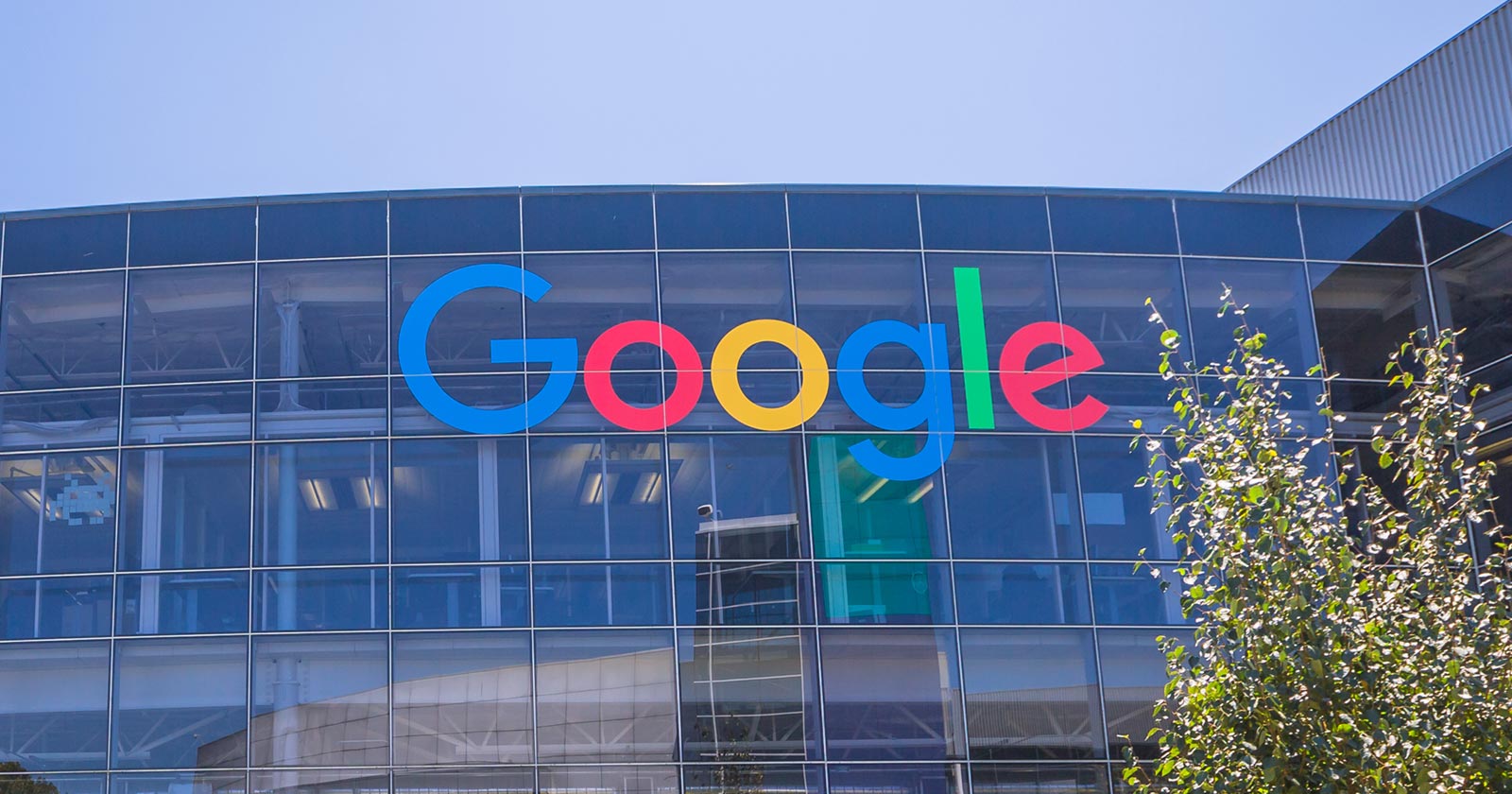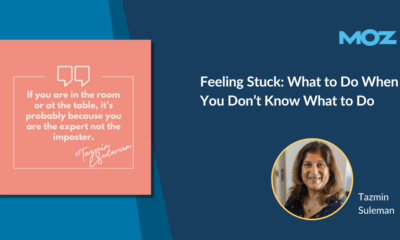SEO
How To Perform A SEO SWOT Analysis

For most organizations, implementing an effective SEO (search engine optimization) strategy involves collecting and analyzing significant amounts of keywords, content, analytics, and competitive data from various sources.
SEO professionals then need to use this data to prioritize keyword, content, structural, and/or linking tasks to address issues or build on existing organic search authority.
One familiar method of prioritization, which lends itself well to helping focus attention and often maximize limited SEO and marketing resources, is the SWOT (Strengths, Weaknesses, Opportunities, Threats) framework.
A SWOT, by definition, is geared to help identify items with the biggest potential impact on growth – or the most dangerous threats.
The following breakdown of organizational SEO priorities assumes keyword research has already been done and is being used for the website, SERP (Search Engine Results Page), and competitive data, which will be the foundation of an effective SWOT.
Keyword research alone is often deserving of its own SWOT process.
Strengths
One of the primary factors search engines use in determining your organic search visibility is an organization’s relative strength and authority for a topical group of keywords.
Identifying those keywords for which the organization already has some authority – or as some like to call “momentum” in the eyes of the search engines – is an excellent place to begin focusing your attention.
Authority is generally difficult to come by and takes time to establish, so why not build on what you already have.
Your first question should be, “Which pieces of content do I have that rank well (let’s say in the top 20 results) in the search engines for my primary keyword groups?”
Recognizing where you have existing strength can be leveraged in three ways:
- Look for opportunities to link out from or to your strongest pieces of content. This can have the dual effect of reinforcing your original piece of content by linking to more comprehensive answers to your audiences’ questions and borrowing from the authority of the strongest piece.
- Perform full-page keyword, technical, and link audits on all webpages that rank between positions five and 20 to see where any improvements can be made to move them higher in the SERPs. This may mean adjusting title tags, headings, or updating links to more current or relevant sources.
- Determine whether the “right” landing pages rank for the keywords you want to be found for. While it may seem great to have your homepage rank for several of your keywords, this is not optimal.
Searchers who land on your homepage looking for something specific will have to spend more time clicking or searching again to find the exact answer to their question.
Identify the pages you have that provide answers, and focus on having them usurp the position currently maintained by the homepage.
If you determine such pages don’t exist, then it’s time to create them.
Be sure to also pay attention to the types and characteristics of your strongest content pieces as signals to what content to create moving forward.
For example, if you have videos ranking well on Google and/or YouTube, by all means, create more videos.
If long-form blog posts dominate the top of the search results for your primary keywords, this is your cue to publish and share more of the same.
Weaknesses
We all have our weaknesses; when it comes to SEO, recognizing and admitting them early on can save us a great deal of effort, time, money, and lost business.
Keywords And Content
While there are undoubtedly keyword groups we feel we must be found for, it’s important to let go of those which will require too much time and/or effort to establish authority for.
Generally, a quick review of the search engine results will reveal keywords that are out of reach based on your competitors’ size, age, reputation, and quality of content.
In this case, looking at the more specific long-tail and intent-driven keyword alternatives may be necessary or considering other avenues (including paid) to generate visibility, traffic, and conversions.
Sometimes, the best strategy is to employ complementary paid search tactics until you can establish organic search authority.
Technical Audit
Another area of weakness, which you can readily control more, maybe the quality of your own website and content from a technical/structural, keyword relevance, or depth perspective.
You can begin identifying areas of weakness by conducting an SEO audit.
There are several excellent free and paid tools available, including Google Lighthouse and Search Console (specifically the Core Web Vitals Report and Mobile-Friendly Test), which will provide a prioritized list of issues and/or errors found in the title and heading tags, internal and external links, website code, keyword usage/density, and a myriad of mobile-friendly factors.
As noted above, you should start by focusing on and fixing any issues found on those pages for which you already have some authority based on search engine results.
Optimizing these pages can only help improve their chances of moving up the SERPs.
You can move on to other priority web pages based on website analytics data or strategic importance.
Backlinks
Organically obtained, relevant, quality backlinks (aka inbound links) are still a search engine ranking factor as they speak to, and can enhance, the authority of the site to which they link.
As with site auditing, many good third-party backlink tools can reveal where you maintain backlinks. These are particularly useful for looking at the backlink sources of your strongest-known competitors.
Where appropriate, you may want to reach out to obtain links from the same relevant sources to leverage their authority.
Opportunities
In SEO, opportunities abound for those who know how, where, and who take the time to look.
SEO is really about moving from one opportunity to the next.
Once optimization is deemed successful for one group of keywords or pieces of content, it’s time to move to the next topic upon which authority can be established or reinforced.
Keywords And Content
Several keyword research tools like Ahrefs, Semrush, and others can discover both keyword and content opportunities or gaps based on providing your website domain, the domains of your known competitors, or a targeted list of keywords.
Most provide prioritized lists of potentially high-value keywords based on estimated monthly search volumes, organic traffic, and/or relative competition.
In other words: Which high-value keywords are your competitors ranking for which you are not?
As with the Weaknesses above, part of this analysis should consider the level of effort required to obtain authority relative to the potential return on establishing organic visibility.
Is it a worthwhile opportunity?
 Screenshot of Semrush Keyword Gap tool, July 2022
Screenshot of Semrush Keyword Gap tool, July 2022- A more manual process for discovering keyword and content opportunities is to run a reverse website audit on competitors’ websites.
Or, spend some time simply reviewing your top competitors’ primary pages, paying particular attention to the keywords used in title tags, headings, and internal link anchor text.
These are presumably the keywords that matter most to them.
However, be careful, as this strategy assumes the competition has conducted their own keyword research and has been following SEO best practices, which may or may not always be the case.
Focusing on those competitors who rank well for your primary keywords should single out the ones who are intentionally optimizing for search.
Content Refresh
Another opportunity within a web presence is the refresh of top-performing or complementary content.
First, scan the SERPs or a preferred keyword tool to identify older content that is ranking for target keywords or serves to support other primary content pages.
Then, review this content to see where there may be opportunities to update text, images, internal/external links, or any other components.
Perhaps there’s an opportunity to enhance the piece by creating and adding images or videos.
Finally, re-share this content via appropriate channels, and perhaps consider identifying new avenues – as a previously popular piece of content will likely perform well again.
Existing content offers an excellent opportunity to build authority, often with just a little extra effort.
Backlinks
While typically a manually intensive process, there is long-term value in seeking out backlinks.
Ideally, you want to identify relevant, authoritative websites/domains from which high-quality inbound links can be obtained.
There are several sources you can use to start looking for inbound links:
The SERPs for your primary keywords are a natural backlink research starting point, as the websites found here are, by definition, considered “relevant” and “authoritative” by the search engines.
Of particular interest are those sites which rank ahead of yours because they presumably have higher authority upon which you can piggyback.
Look for any non-competitive backlinking opportunities such as directories, association listings, or articles and blog posts that you may be able to contribute to, get mentioned in, or comment on.
The Google Search Console Links Report is the next best resource for backlink research, as it indicates what Google recognizes as the domains linking to your content.
Here you can validate the quality and accuracy of the links you already have, as well as determine if there are any other opportunities to obtain additional links from these same domains.
Referral sources in Google Analytics represent external sites that send you traffic but may or may not be providing an organic search boost.
Review these domains/sites regularly to see other linking opportunities.
4. As noted under Weaknesses, several third-party backlink tools can be used to identify potential backlink sources where links to your competitors can be found.
Some will even help by authority ranking and prioritizing the value of each existing and potential source, which can save significant time.
Threats
Whether done intentionally or not, there are more than a few things which can threaten organic authority in the eyes of the search engines and should be prioritized to avoid potentially damaging penalties.
Content
The primary content threat most are familiar with is duplicate content, which, as the name suggests, is content repurposed on a website without proper attribution to the original source.
To avoid being penalized for using this type of content, you must be sure to include rel canonical tags by referencing the source content in the headers of pages containing the duplicate content.
In other words: It’s okay to have some duplicate content on a website, as long as the original source is properly identified.
Backlinks
While relevant, high-quality backlinks can help boost your authority, irrelevant, low-quality inbound links from non-reputable sites (particularly those that are part of paid link schemes) can do long-lasting harm and even get you tagged with a manual penalty.
The threat here is a potential loss of organic visibility and traffic.
Further, recovering from a manual penalty is not an easy or quick process.
Simply put, you should never pay for backlinks and ensure any backlinks you acquire have not been purchased on your behalf by a third party, like a marketing agency.
As such, you should regularly review the Google Search Console Links report or other backlink reporting sources for questionable domains or those you don’t recognize as relevant.
Competitors
All online competitors creating their own content represent threats to your authority.
Even if you maintain strong organic visibility and traffic relative to your “known” competitors, there is always the potential for new, aggressive, or unknown competitors to come onto the scene.
Many of the aforementioned SEO tools provide competitor discovery tools to help quickly identify domains that consistently appear in the search results for your primary keywords.
Oftentimes, there may be competitors here you’ve never considered. You’ll naturally want to pay attention to these competitors and use the tactics noted above to see what you can learn from them.
Search engines love and reward fresh, relevant content, and Google even has a freshness algorithm to identify it.
As such, you should regularly monitor the search engine results for new entrants, which may, over time, challenge your authority and position.
Of course, the best way to combat this type of threat is by continuing to publish and update your own comprehensive content, which will give the search engines less reason to question your authority.
Actioning On The SWOT
The detailed SWOT outputs will map prioritized actions to protect and/or improve online authority, visibility, and resulting traffic, leads, and revenue.
Proactive search marketers should conduct these analyses on at least a bi-annual, if not quarterly, basis, depending on how competitive the industry is and how active the competitors are.
A well-structured SWOT can provide an excellent roadmap for where, when, and how often action needs to be taken or content needs to be created and shared to boost your organization’s primary SEO goals.
More Resources:
Featured Image: Rawpixel.com/Shutterstock
SEO
Google On Hyphens In Domain Names

Google’s John Mueller answered a question on Reddit about why people don’t use hyphens with domains and if there was something to be concerned about that they were missing.
Domain Names With Hyphens For SEO
I’ve been working online for 25 years and I remember when using hyphens in domains was something that affiliates did for SEO when Google was still influenced by keywords in the domain, URL, and basically keywords anywhere on the webpage. It wasn’t something that everyone did, it was mainly something that was popular with some affiliate marketers.
Another reason for choosing domain names with keywords in them was that site visitors tended to convert at a higher rate because the keywords essentially prequalified the site visitor. I know from experience how useful two-keyword domains (and one word domain names) are for conversions, as long as they didn’t have hyphens in them.
A consideration that caused hyphenated domain names to fall out of favor is that they have an untrustworthy appearance and that can work against conversion rates because trustworthiness is an important factor for conversions.
Lastly, hyphenated domain names look tacky. Why go with tacky when a brandable domain is easier for building trust and conversions?
Domain Name Question Asked On Reddit
This is the question asked on Reddit:
“Why don’t people use a lot of domains with hyphens? Is there something concerning about it? I understand when you tell it out loud people make miss hyphen in search.”
And this is Mueller’s response:
“It used to be that domain names with a lot of hyphens were considered (by users? or by SEOs assuming users would? it’s been a while) to be less serious – since they could imply that you weren’t able to get the domain name with fewer hyphens. Nowadays there are a lot of top-level-domains so it’s less of a thing.
My main recommendation is to pick something for the long run (assuming that’s what you’re aiming for), and not to be overly keyword focused (because life is too short to box yourself into a corner – make good things, course-correct over time, don’t let a domain-name limit what you do online). The web is full of awkward, keyword-focused short-lived low-effort takes made for SEO — make something truly awesome that people will ask for by name. If that takes a hyphen in the name – go for it.”
Pick A Domain Name That Can Grow
Mueller is right about picking a domain name that won’t lock your site into one topic. When a site grows in popularity the natural growth path is to expand the range of topics the site coves. But that’s hard to do when the domain is locked into one rigid keyword phrase. That’s one of the downsides of picking a “Best + keyword + reviews” domain, too. Those domains can’t grow bigger and look tacky, too.
That’s why I’ve always recommended brandable domains that are memorable and encourage trust in some way.
Read the post on Reddit:
Read Mueller’s response here.
Featured Image by Shutterstock/Benny Marty
SEO
Reddit Post Ranks On Google In 5 Minutes

Google’s Danny Sullivan disputed the assertions made in a Reddit discussion that Google is showing a preference for Reddit in the search results. But a Redditor’s example proves that it’s possible for a Reddit post to rank in the top ten of the search results within minutes and to actually improve rankings to position #2 a week later.
Discussion About Google Showing Preference To Reddit
A Redditor (gronetwork) complained that Google is sending so many visitors to Reddit that the server is struggling with the load and shared an example that proved that it can only take minutes for a Reddit post to rank in the top ten.
That post was part of a 79 post Reddit thread where many in the r/SEO subreddit were complaining about Google allegedly giving too much preference to Reddit over legit sites.
The person who did the test (gronetwork) wrote:
“…The website is already cracking (server down, double posts, comments not showing) because there are too many visitors.
…It only takes few minutes (you can test it) for a post on Reddit to appear in the top ten results of Google with keywords related to the post’s title… (while I have to wait months for an article on my site to be referenced). Do the math, the whole world is going to spam here. The loop is completed.”
Reddit Post Ranked Within Minutes
Another Redditor asked if they had tested if it takes “a few minutes” to rank in the top ten and gronetwork answered that they had tested it with a post titled, Google SGE Review.
gronetwork posted:
“Yes, I have created for example a post named “Google SGE Review” previously. After less than 5 minutes it was ranked 8th for Google SGE Review (no quotes). Just after Washingtonpost.com, 6 authoritative SEO websites and Google.com’s overview page for SGE (Search Generative Experience). It is ranked third for SGE Review.”
It’s true, not only does that specific post (Google SGE Review) rank in the top 10, the post started out in position 8 and it actually improved ranking, currently listed beneath the number one result for the search query “SGE Review”.
Screenshot Of Reddit Post That Ranked Within Minutes
Anecdotes Versus Anecdotes
Okay, the above is just one anecdote. But it’s a heck of an anecdote because it proves that it’s possible for a Reddit post to rank within minutes and get stuck in the top of the search results over other possibly more authoritative websites.
hankschrader79 shared that Reddit posts outrank Toyota Tacoma forums for a phrase related to mods for that truck.
Google’s Danny Sullivan responded to that post and the entire discussion to dispute that Reddit is not always prioritized over other forums.
Danny wrote:
“Reddit is not always prioritized over other forums. [super vhs to mac adapter] I did this week, it goes Apple Support Community, MacRumors Forum and further down, there’s Reddit. I also did [kumo cloud not working setup 5ghz] recently (it’s a nightmare) and it was the Netgear community, the SmartThings Community, GreenBuildingAdvisor before Reddit. Related to that was [disable 5g airport] which has Apple Support Community above Reddit. [how to open an 8 track tape] — really, it was the YouTube videos that helped me most, but it’s the Tapeheads community that comes before Reddit.
In your example for [toyota tacoma], I don’t even get Reddit in the top results. I get Toyota, Car & Driver, Wikipedia, Toyota again, three YouTube videos from different creators (not Toyota), Edmunds, a Top Stories unit. No Reddit, which doesn’t really support the notion of always wanting to drive traffic just to Reddit.
If I guess at the more specific query you might have done, maybe [overland mods for toyota tacoma], I get a YouTube video first, then Reddit, then Tacoma World at third — not near the bottom. So yes, Reddit is higher for that query — but it’s not first. It’s also not always first. And sometimes, it’s not even showing at all.”
hankschrader79 conceded that they were generalizing when they wrote that Google always prioritized Reddit. But they also insisted that that didn’t diminish what they said is a fact that Google’s “prioritization” forum content has benefitted Reddit more than actual forums.
Why Is The Reddit Post Ranked So High?
It’s possible that Google “tested” that Reddit post in position 8 within minutes and that user interaction signals indicated to Google’s algorithms that users prefer to see that Reddit post. If that’s the case then it’s not a matter of Google showing preference to Reddit post but rather it’s users that are showing the preference and the algorithm is responding to those preferences.
Nevertheless, an argument can be made that user preferences for Reddit can be a manifestation of Familiarity Bias. Familiarity Bias is when people show a preference for things that are familiar to them. If a person is familiar with a brand because of all the advertising they were exposed to then they may show a bias for the brand products over unfamiliar brands.
Users who are familiar with Reddit may choose Reddit because they don’t know the other sites in the search results or because they have a bias that Google ranks spammy and optimized websites and feel safer reading Reddit.
Google may be picking up on those user interaction signals that indicate a preference and satisfaction with the Reddit results but those results may simply be biases and not an indication that Reddit is trustworthy and authoritative.
Is Reddit Benefiting From A Self-Reinforcing Feedback Loop?
It may very well be that Google’s decision to prioritize user generated content may have started a self-reinforcing pattern that draws users in to Reddit through the search results and because the answers seem plausible those users start to prefer Reddit results. When they’re exposed to more Reddit posts their familiarity bias kicks in and they start to show a preference for Reddit. So what could be happening is that the users and Google’s algorithm are creating a self-reinforcing feedback loop.
Is it possible that Google’s decision to show more user generated content has kicked off a cycle where more users are exposed to Reddit which then feeds back into Google’s algorithm which in turn increases Reddit visibility, regardless of lack of expertise and authoritativeness?
Featured Image by Shutterstock/Kues
SEO
WordPress Releases A Performance Plugin For “Near-Instant Load Times”

WordPress released an official plugin that adds support for a cutting edge technology called speculative loading that can help boost site performance and improve the user experience for site visitors.
Speculative Loading
Rendering means constructing the entire webpage so that it instantly displays (rendering). When your browser downloads the HTML, images, and other resources and puts it together into a webpage, that’s rendering. Prerendering is putting that webpage together (rendering it) in the background.
What this plugin does is to enable the browser to prerender the entire webpage that a user might navigate to next. The plugin does that by anticipating which webpage the user might navigate to based on where they are hovering.
Chrome lists a preference for only prerendering when there is an at least 80% probability of a user navigating to another webpage. The official Chrome support page for prerendering explains:
“Pages should only be prerendered when there is a high probability the page will be loaded by the user. This is why the Chrome address bar prerendering options only happen when there is such a high probability (greater than 80% of the time).
There is also a caveat in that same developer page that prerendering may not happen based on user settings, memory usage and other scenarios (more details below about how analytics handles prerendering).
The Speculative Loading API solves a problem that previous solutions could not because in the past they were simply prefetching resources like JavaScript and CSS but not actually prerendering the entire webpage.
The official WordPress announcement explains it like this:
Introducing the Speculation Rules API
The Speculation Rules API is a new web API that solves the above problems. It allows defining rules to dynamically prefetch and/or prerender URLs of certain structure based on user interaction, in JSON syntax—or in other words, speculatively preload those URLs before the navigation. This API can be used, for example, to prerender any links on a page whenever the user hovers over them.”
The official WordPress page about this new functionality describes it:
“The Speculation Rules API is a new web API… It allows defining rules to dynamically prefetch and/or prerender URLs of certain structure based on user interaction, in JSON syntax—or in other words, speculatively preload those URLs before the navigation.
This API can be used, for example, to prerender any links on a page whenever the user hovers over them. Also, with the Speculation Rules API, “prerender” actually means to prerender the entire page, including running JavaScript. This can lead to near-instant load times once the user clicks on the link as the page would have most likely already been loaded in its entirety. However that is only one of the possible configurations.”
The new WordPress plugin adds support for the Speculation Rules API. The Mozilla developer pages, a great resource for HTML technical understanding describes it like this:
“The Speculation Rules API is designed to improve performance for future navigations. It targets document URLs rather than specific resource files, and so makes sense for multi-page applications (MPAs) rather than single-page applications (SPAs).
The Speculation Rules API provides an alternative to the widely-available <link rel=”prefetch”> feature and is designed to supersede the Chrome-only deprecated <link rel=”prerender”> feature. It provides many improvements over these technologies, along with a more expressive, configurable syntax for specifying which documents should be prefetched or prerendered.”
See also: Are Websites Getting Faster? New Data Reveals Mixed Results
Performance Lab Plugin
The new plugin was developed by the official WordPress performance team which occasionally rolls out new plugins for users to test ahead of possible inclusion into the actual WordPress core. So it’s a good opportunity to be first to try out new performance technologies.
The new WordPress plugin is by default set to prerender “WordPress frontend URLs” which are pages, posts, and archive pages. How it works can be fine-tuned under the settings:
Settings > Reading > Speculative Loading
Browser Compatibility
The Speculative API is supported by Chrome 108 however the specific rules used by the new plugin require Chrome 121 or higher. Chrome 121 was released in early 2024.
Browsers that do not support will simply ignore the plugin and will have no effect on the user experience.
Check out the new Speculative Loading WordPress plugin developed by the official core WordPress performance team.
How Analytics Handles Prerendering
A WordPress developer commented with a question asking how Analytics would handle prerendering and someone else answered that it’s up to the Analytics provider to detect a prerender and not count it as a page load or site visit.
Fortunately both Google Analytics and Google Publisher Tags (GPT) both are able to handle prerenders. The Chrome developers support page has a note about how analytics handles prerendering:
“Google Analytics handles prerender by delaying until activation by default as of September 2023, and Google Publisher Tag (GPT) made a similar change to delay triggering advertisements until activation as of November 2023.”
Possible Conflict With Ad Blocker Extensions
There are a couple things to be aware of about this plugin, aside from the fact that it’s an experimental feature that requires Chrome 121 or higher.
A comment by a WordPress plugin developer that this feature may not work with browsers that are using the uBlock Origin ad blocking browser extension.
Download the plugin:
Speculative Loading Plugin by the WordPress Performance Team
Read the announcement at WordPress
Speculative Loading in WordPress
See also: WordPress, Wix & Squarespace Show Best CWV Rate Of Improvement
-

 WORDPRESS7 days ago
WORDPRESS7 days ago10 WordPress Influencers to Follow in 2024 – WordPress.com News
-

 SEARCHENGINES7 days ago
SEARCHENGINES7 days agoGoogle Image Search Adds Pixel Level Object Segmentation Animation
-

 MARKETING7 days ago
MARKETING7 days agoFeeling Stuck: What to Do When You Don’t Know What to Do
-

 PPC5 days ago
PPC5 days agoA History of Google AdWords and Google Ads: Revolutionizing Digital Advertising & Marketing Since 2000
-

 PPC6 days ago
PPC6 days agoCompetitor Monitoring: 7 ways to keep watch on the competition
-

 SEARCHENGINES6 days ago
SEARCHENGINES6 days agoMore Google March 2024 Core Update Ranking Volatility
-

 PPC6 days ago
PPC6 days ago31 Ready-to-Go Mother’s Day Messages for Social Media, Email, & More
-

 WORDPRESS6 days ago
WORDPRESS6 days agoThrive Architect vs Divi vs Elementor















You must be logged in to post a comment Login